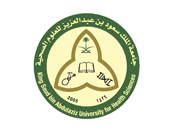Abstract
Background: The purpose of this article was to review the literature on lecture effectiveness and to suggest avenues for improvements. Methods: Selective literature review with an emphasis on active learning in the classroom setting. Results: Conventional lectures are effective only to a limited extent in attaining important curriculum objectives. They do not promote critical thinking; student attendance tends to be low and so is cognitive engagement; furthermore, the idea that lectures should and can cover all essential subject matter is false. Moreover, empirical literature on what students actually learn from lectures is lacking. A most fundamental problem of lectures is that they are based on the information transmission fallacy, the idea that students learn just by being told. The paper proposes an alternative approach to lecturing based on studies in teaching the natural sciences: active learning in the classroom. This approach has four key elements: (a) an initial individual learning attempt by students to master important concepts or ideas, (b) the presentation of a relevant problem by the teacher in the classroom setting, (c) elaborative activities of individual students or small groups of peers to come up with solutions to the problem, and (d) feedback of the teacher. Conclusion: The available evidence suggests that active learning in the classroom setting supports and fosters learning to a much larger extent than conventional large-group teaching.
Recommended Citation
Schmid, Henk G.; Wagener, Stephanie L.; Smeets, Guus A.C.M.; Keemink, Lianne M.; and van der Molen, Henk T.
(2015)
"On the Use and Misuse of Lectures in Higher Education,"
Health Professions Education: Vol. 1:
Iss.
1, Article 3.
DOI: 10.1016/j.hpe.2015.11.010
Available at:
https://hpe.researchcommons.org/journal/vol1/iss1/3



